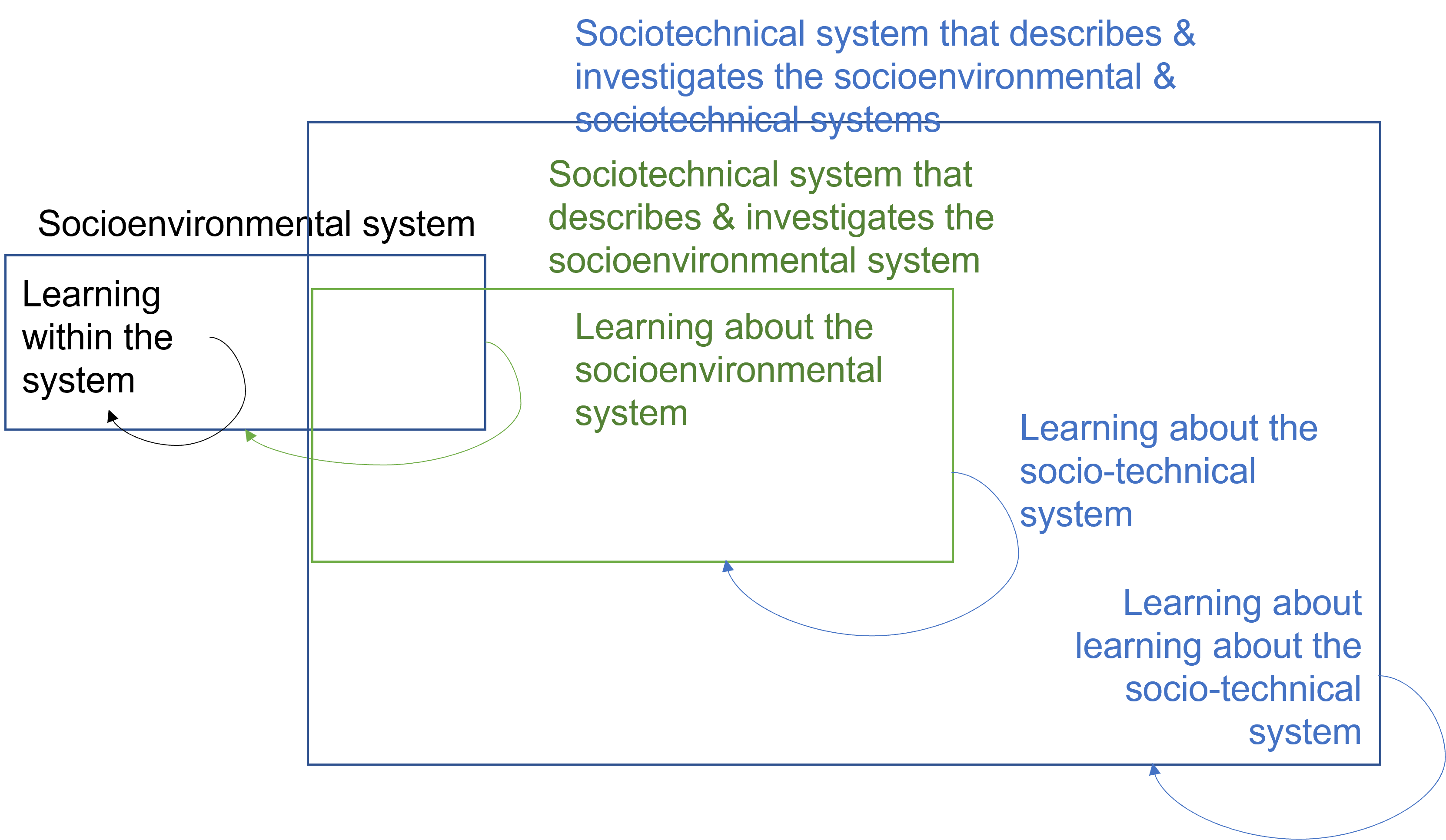TODO
It may seem strange that the digital twin includes a description of the digital twin. This “self-reference” is included to make explicit how the digital twin is meant to work, and help reason about how it can be improved in future.
The backbone of the digital twin is formed by a conceptual model rather than the data sources as we specifically want to be able to describe concepts and instances about which information is missing or uncertain. We also want a mechanism to drive reflection and learning about the digital twin, and the mechanism we are experimenting with in this project is for the digital twin to include a representation of itself. Practically speaking, this simply means that we include descriptions of visualisations and protocols, as noted above. However, there is a need to anchor this approach in a theoretical foundation, which we start to do here.
When embracing imperfection and gradual improvement over time, we need to ensure that a learning-focused digital twin provides a sufficiently flexible framework that does not trap us with its imperfections. Assuming that learning within the socioenvironmental system is already happening, the digital twin needs to support three additional levels of (meta-)learning illustrated below: 1) learning about the socio-environmental system, 2) learning about learning about the socio-environmental system, i.e. learning about the socio-technical system that describes and investigates the socio-environmental system, 3) learning about learning about the socio-technical system. To avoid higher-order recursion, we can explicitly include the processes for (3) within the socio-technical system, i.e. drawing the boundaries of the socio-technical system so that it describes and investigates the socio-environmental system and itself. Learning about the socio-technical system therefore includes learning about learning about the socio-technical system, learning about learning about learning about the socio-technical system and so on.

These mental gymnastics means that the digital twin is able to support reasoning about itself, and therefore to help break out of the constraints it imposes. Specifically, we are able to avoid three key traps that arise when using a digital twin for learning. The first trap is that data may be taken at face value rather than questioned. This amounts to single loop learning within the system, i.e. improving the state of the socioenvironmental system by detecting and correcting issues without questioning or altering the underlying values of the system (Argyris, 1999). Learning about the system involves double loop learning, where mismatches are corrected by first examining and altering the governing variables and then the actions (Argyris, 1999). A second trap remains that our processes for reasoning about concepts and engaging with data sources may be taken for granted rather than also seen as a part of the system that is open to change. This is addressed by triple loop learning (or “deutero-learning”, Tosey et al., 2012) which is defined broadly as learning about learning and here referred to as learning about the socio-technical system. The third trap is that our processes for reflecting on learning are insufficient, which is then addressed by our fourth loop which helps to improve those processes over time.
In principle, to represent a socio-technical system, a digital twin could include a (time-varying) representation of research institutes, research activities, and research investment. Within this project, we start by including within the digital twin a description of the means by which the user is expected to engage with it. Specifically, we define separate elements in the data model for: 1) the concept in the socioenvironmental system, 2) a specific “visualisation” of that concept in the digital twin, and 3) the “protocol” by which a user of the digital twin engages with a visualisation and queries or alters information about constituent concepts (see Figure 6). The term protocol is used to refer to an explicit description of the activities involved, but can be used either prescriptively or descriptively, i.e. a protocol may either be instructions for performing an activity or a description of informal activities previously undertaken.
In the context of a learning-focused digital twin, each learning loop therefore formally involves changes to the digital twin’s data sources, concepts, visualisations, or protocols. The first loop operates within the system without involving the formal socio-technical system (and digital twin in particular). The second loop changes the state of concepts and data we have about them. The third loop operates on visualisations and protocols. The fourth loop involves modifying the digital twin not just in reality, but also the representation of the digital twin within itself. Each form of learning therefore potentially has a formal representation within the digital twin, though the extent to which any or all learning is actually formalised will depend on the application context.
Putting these pieces together, a web portal digital twin for a catchment can, for example, define concepts for catchments (physical feature), water budget (qualities), inflows and outflows (processes). A concrete instance can be defined for a particular catchment (e.g., sub-catchment on a property) and time period, with estimates drawn manually from multiple data sources described in the digital twin. In a web portal digital twin, the visualisation of the water budget might be a printable graph provided on a static web page, with clearly annotated provenance, and a description of the protocol used to produce it. The digital twin is the portal, which includes a page describing both the portal and its use.
The abstract data model presented here can be reified in various different concrete forms depending on the application context. Given the loose coupling approach adopted in this project, a formal definition of terms and document formats is not yet necessary and was deemed to be out of scope, i.e. a machine-readable version of this data model is left to future work.
Potential future studies
- Data model including representation of itself and the digital twinning process